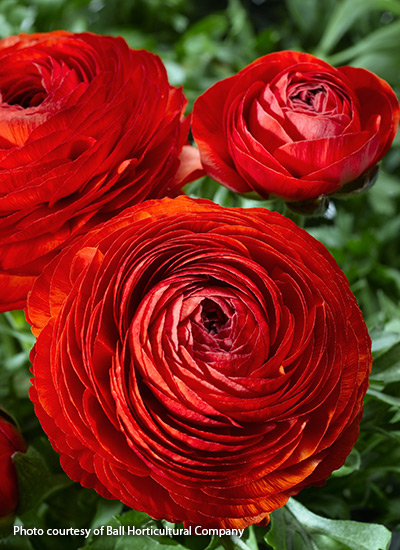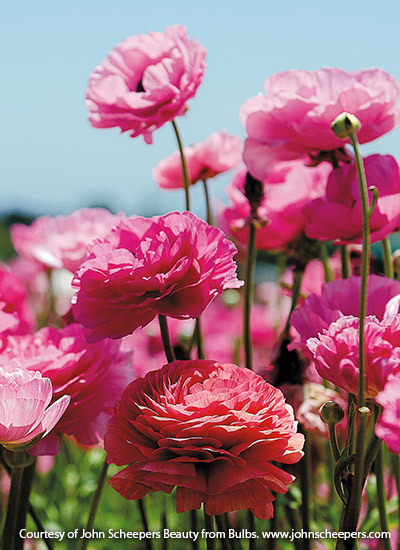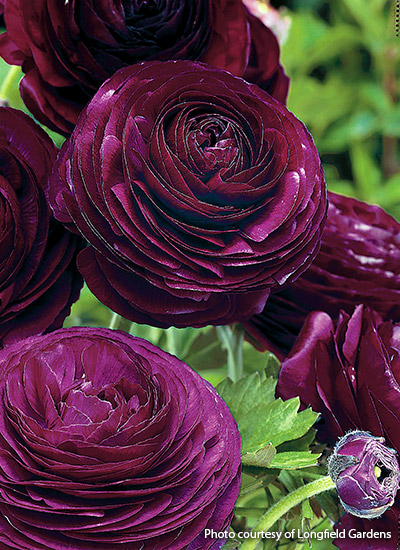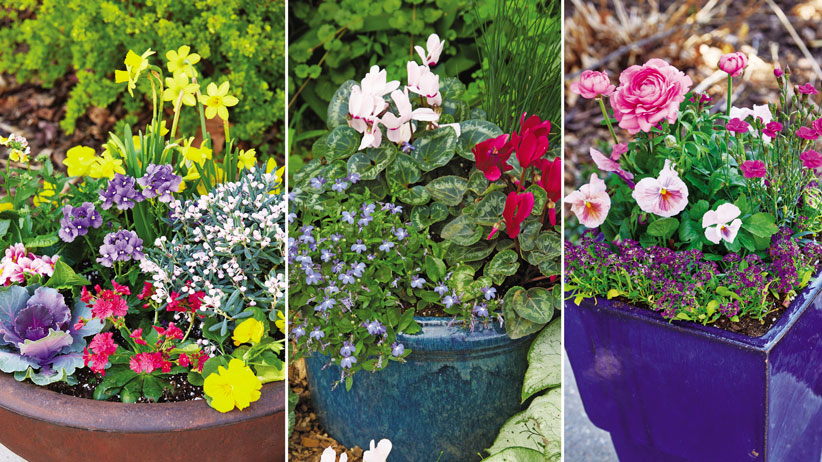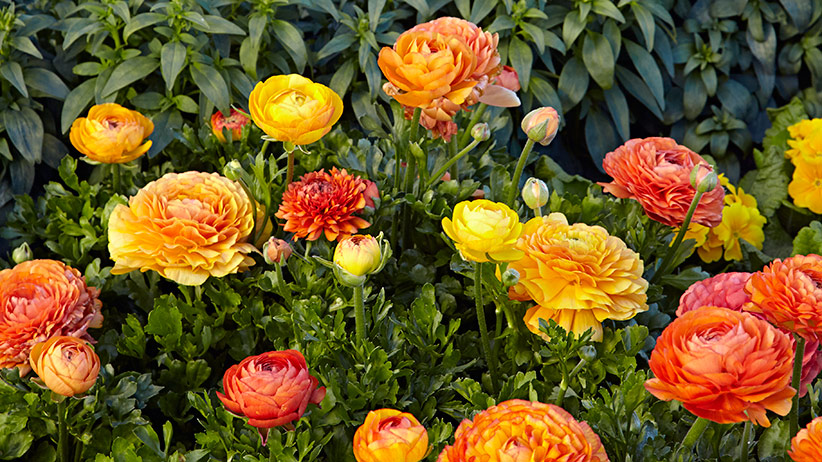
Ranunculus are cool-weather beauties
I’ve always admired ranunculus (also called Persian buttercup) — those beautiful flowers are real attention-getters in photos and florist’s bouquets. One spring I bought a bag of tubers on sale at a big box store in late spring. (Technically they're tuberous roots but are sometimes called tubers for short.) Unfortunately, when I tried to grow them, the results weren’t great — spindly foliage and no blooms. I just chalked it up to them being difficult to grow. Then I learned they're really cool-season flowers and thrive in the same conditions as pansies (Viola spp. & hybrids), snapdragons (Antirrhinum majus) and other spring favorites. Let me introduce you ranunculus and some of the things I’ve learned since my first disappointing effort.

How to use ranunculus in the garden
It’s easy to work in ranunculus near the front of a border. See how 12- to 16-inch-tall Bloomingdale II Orange in the photo above fills the gap between lower-growing primrose (Primula hybrids) and spiky snapdragons behind? While ranunculus look great planted in mass like this, you don’t have to buy buckets full of them to enjoy the pretty blooms. Because each ranunculus can have several 2- to 5-inch flowers open at one time, smaller-scale plantings are just as pleasing. In areas where they’re cold-hardy, position ranunculus near perennials or shrubs to hide the foliage as it fades and the bare spot dormant plants leave behind.
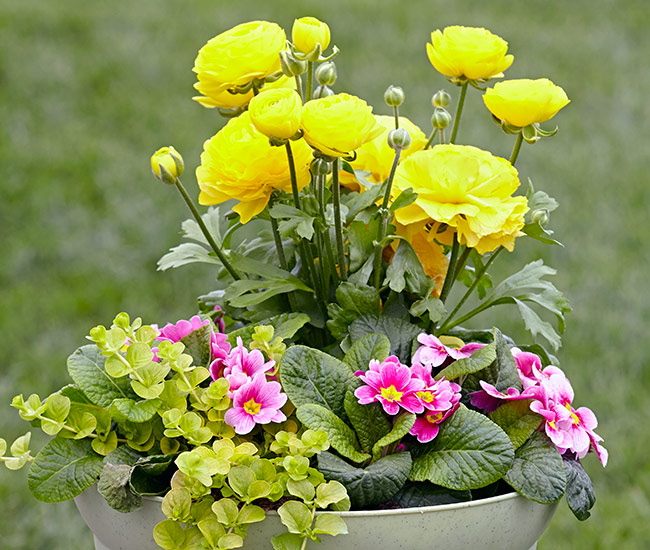
Use ranunculus in early spring planters
Ranunculus puts on quite a show — perfect for early spring containers like the one above. Flowering can continue up to five weeks, with individual blooms lingering for three to seven days in cool weather. If your soil is poorly drained, a container like this one gives the tubers just what they need to grow beautiful plants.
You Might Also Like:
6 ways to create a beautiful spring garden
Easy spring container
Spring basket flower arrangement
A no-fail formula for making beautiful containers
How to buy ranunculus tubers
You’ll find the best selection of colors in late fall, though there are usually some available in early spring, too. When you buy them early, store the bag in a cool, dry place that stays 50 to 55 degrees F until it’s planting time.
Where to buy ranunculus tubers
- Local garden centers
- Longfield Gardens 855-534-2733
- K.Van Bourgondien Dutch Bulbs 800-552-9996
- Van Engelen, Inc. 860-567-8734
How to grow ranunculus
Grow ranunculus in full sun to part shade in moist, well-drained soil. Ranunculus are cold-hardy in USDA zones 8 to 11, grow them as annuals in colder zones.
Lots of light
With full sun, lots of organic matter and well-drained soil, ranunculus will look great and produce plenty of flowers.
Watch the water
Poor drainage causes plants to rot. Keep them moist, but not wet, while the foliage is green and flowers are blooming. But they’re more likely to keep coming back if you let them dry out as they go dormant. A bimonthly application of a liquid plant food, such as 12-4-8, will produce more flowers.
Trim to keep tidy
Deadheading helps to keep ranunculus blooming. Cut the stems back below the foliage to tidy plants.
As temperatures regularly get above 70 degrees F during the day, ranunculus slows its flowering and gets leggy. If you’re growing it as an annual, that’s a good time to pull plants out. Otherwise leave the foliage in place so these tuberous roots can store energy for the following year. The leaves will eventually yellow; then it’s OK to cut them off at soil level.
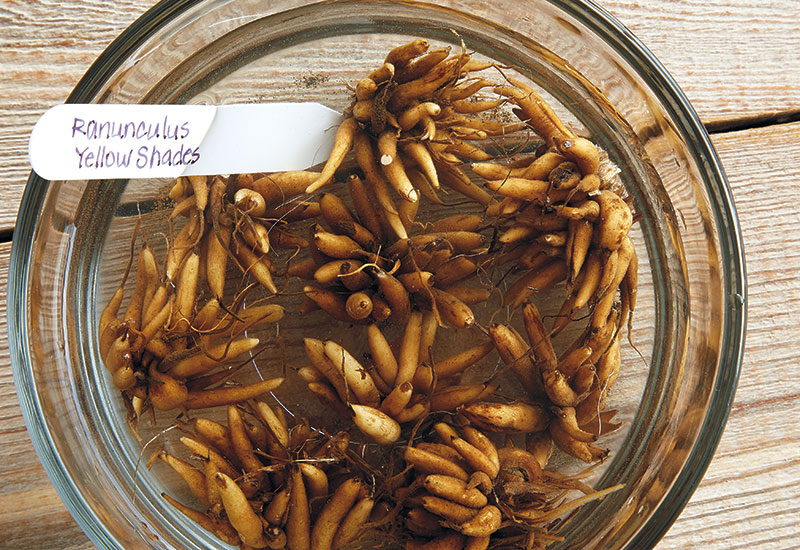
How to start ranunculus
In USDA zones 8 to 11 you can plant ranunculus in the ground in fall — the foliage often sprouts and stays evergreen until plants bloom in late winter. In colder zones you will want to start the tubers inside.
Planting ranunculus tubers inside
Where ranunculus isn’t cold-hardy (zone 7 and colder), start it indoors. Plants grow best when daytime temperatures are in the mid- to high 50-degree F range and take 12 to 16 weeks from planting to bloom. So check your records or check online to see when these temperatures usually occur for your area and count back from there to start ranunculus. This means you may need to plant them inside as early as January.
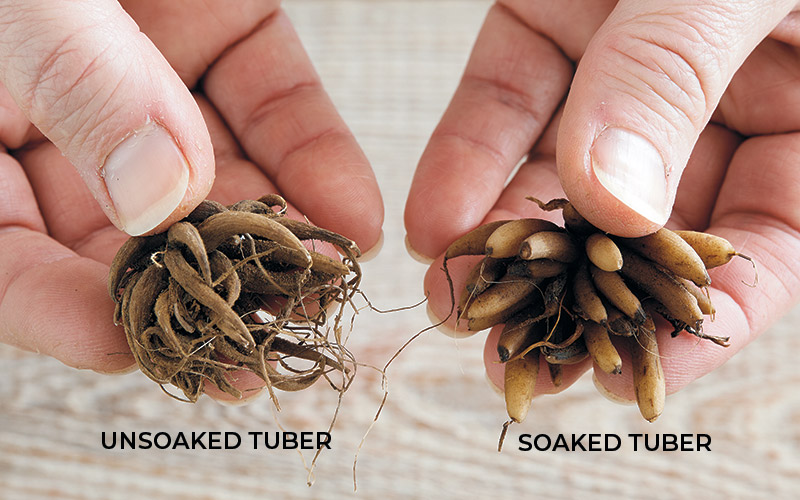
Soak ranunculus tubers before planting
I’d read about starting ranunculus and saw lots of debate about whether to soak the tubers first or not. So I talked with Ken Harr, product technical manager with Sakata® Seed, who grows lots of them. He said that both approaches work but the important thing about soaking is to not forget them. You can leave them in water for as little as an hour or as long as overnight, but no longer. Otherwise they get water-logged and may rot. The key with unsoaked tubers is keeping the potting mix moist but not soggy until you see growth. After that you can allow the mix to dry out between drinks.
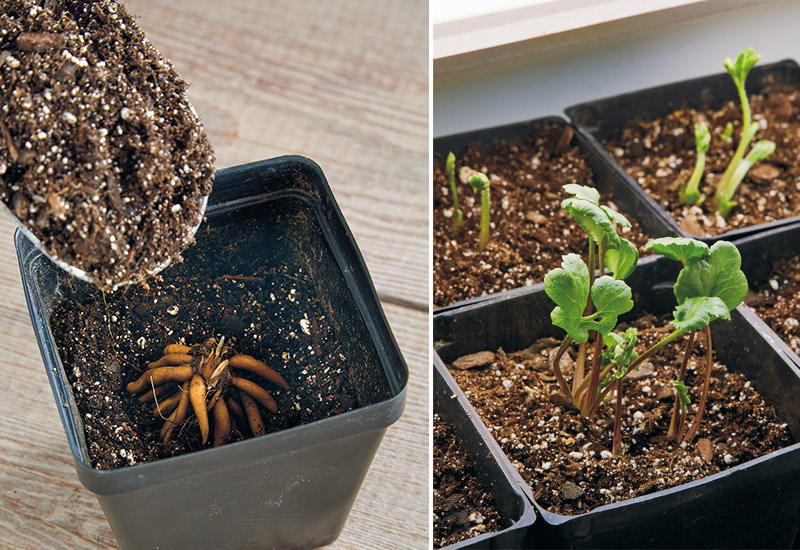
Planting ranunculus tubers
- To plant ranunculus in pots inside — use at least 3-in. pots per tuber, or set several of them in a larger pot.
- Place potting mix in the bottom, then the tuber with the roots curling downward.
- Top off with 2 in. of potting mix, water and set containers where it stays 58 to 62 degrees F. There’s no need for lights until they sprout.
- In a couple of weeks you should see new ranunculus leaves taking off. Once temperatures are 50 to 60 degrees F during the day, they can be hardened off outside, then planted in the ground.
How to store ranunculus tubers
Where ranunculus isn’t hardy, most gardeners grow them as annuals. But you can keep your favorites to grow again by digging tubers after most of the foliage has died back in early summer.
- Brush off as much potting mix or soil as possible and remove remaining stems and leaves.
- Then let them dry for a week to 10 days in a cool, well-ventilated spot out of direct sunlight.
- The tubers can go in a box of slightly moistened peat moss or vermiculite.
- Store in a cool (around 50 degrees F), dry place until it’s time to start growing these beautiful flowers again the next growing season.
You Might Also Like:
How to save tender bulbs for next season
12 bulbs for gardeners in every region
A no-fail formula for designing beautiful containers
Ranunculus varieties to try
There’s not a big size range among ranunculus; they'll grow 8 to 18 in. tall and 6 to 12 in. wide. The ranunculus you find at your local garden center are often sold as a mix, but you can get them in red, pink, orange, yellow, purple, white and bicolors. If you want a single color, your best bet is a mail-order nursery.
In addition to the varieties you will see below, you’ll also find the petite Magic™ series. It grows 8 to 10 inches tall and wide and makes a colorful edging for a path or patio. Tecolote® is one of the tallest, at 12 to 18 inches tall and 8 to 10 inches wide. Its long stems make it great for bouquets.



